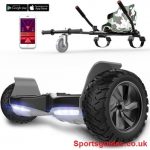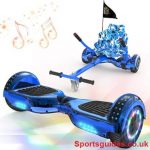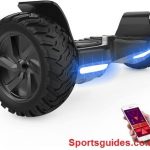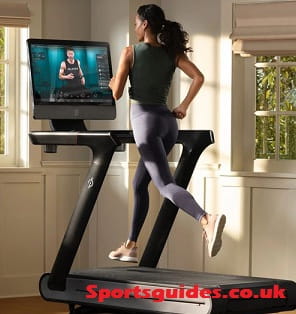As an Amazon Associate, I earn from qualifying purchases.
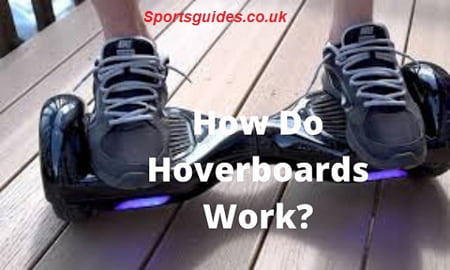
Hoverboards are cool because they can move without touching the ground. They are world-famous self-balancing, battery-operated boards that let you ride around. These items are awesome, but it is important to be safe when using one!
Have you ever watched people on hoverboards and wonder: How do hoverboards work? Well, wonder no more! We will be explaining the science behind hoverboards to all the ways they’re used in popular culture nowadays so that you can get the most out of your hoverboard.
If you’re interested in learning more about this awesome invention, read this article to see how it all works!
How Do Hoverboards Work?
There is an invisible force that can change your speed and direction at will. A sophisticated built-in technology helps you slow down when your weight travels backwards or speed up on leaning forwards in response as needed! Gyroscopes and speed/tilt sensors are the main group of magicians that make this all happen.
The self-balancing board has a rotating frame in the centre. Each wheel contains motors, as well as sensors to detect the speed and tilt of the board. Triggered by your weight on this board, these sensors send this information to an onboard control unit and gyroscope located inside the foot platform for stability purposes.
The gyroscopes get all data from the wheels’ tilts sensors then pass it along to a computer. This small “brain” processes all information, sending back out what is necessary so that motors can turn them at just enough speed or direction based on how fast they want their scooter moving at any given moment.
Plus, the switches can trigger a sensor to turn on or off the infrared LED light, which tells it not to run any motors. When you lean forward, the LED light turns off, and then sensors send a signal to a logic board to spin the wheels. The motors do not depend on another one so that the riders can do circles.
The two switches of pressure pads on each side of the board perform an important function, one in the front and the other in the rear for balance purposes. These switches help to detect the users’ weight distribution.
It will facilitate the turning mechanism when both feet press forward, or whichever side you prefer for that matter!
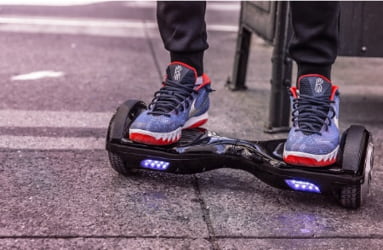
Riding a hoverboard
It seems that in most hoverboards, the lithium-ion batteries are on opposite sides. It helps reduce heat when riding and can help prevent fires from occurring. There have been cases where these devices burst into flames while being ridden. This may be due to poor placement of battery or insulation.
Some teardowns show they are not very well-made at all: wires tangled around each other without any way the batteries might stay put safely. Safety standards for many individual components in hoverboards exist. However, there is no one for the board itself.
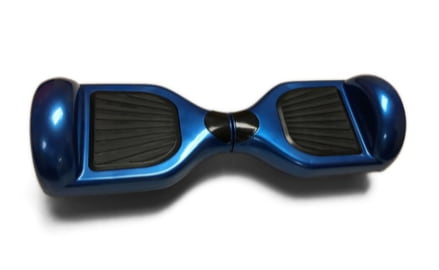
A popular hoverboard
How Can Future Designs Improve?
Hoverboards do not perform well outdoors due to the small size of the wheel and the non-existence of suspension. If you are not paying attention, cracks in the pavement can send your board flying off. Uneven sidewalks and pebbles make it even more challenging to ride smoothly without crashing into something.
To deal with this, hoverboards need bigger tires and wheels or some suspension. How these boards work makes these two things problematic. Tires that are bigger and have more traction will require a slight increase in power to propel them.
It seems that these boards have limits in their current form, and more powerful batteries may cause even riskier contraptions. Adding suspension is a bit of an engineering feat since the sensors have to own constant stability for it all to stay balanced and upright.
The platforms in which your feet reside require something stable, or else bumping around will lead to acceleration and deceleration that is quite unpleasant.
Nonetheless, almost all those issues stem from the batteries to some extent. No matter what reason, lots of similar inventions need a 90-minute-charge. That’s why overcharge protection would come in handy. Still, it’s surprising that, though this device is expensive, it does not own one. So it would be great if someone did us all a favour and created a better board.
Conclusion
The hoverboard is a fascinating invention that has been around for decades. They can be a lot of fun, but we want to ensure you have enough information and preparation before buying one. How do hoverboards work? We hope this article has given you the answer to this question and what features hoverboards offer.

